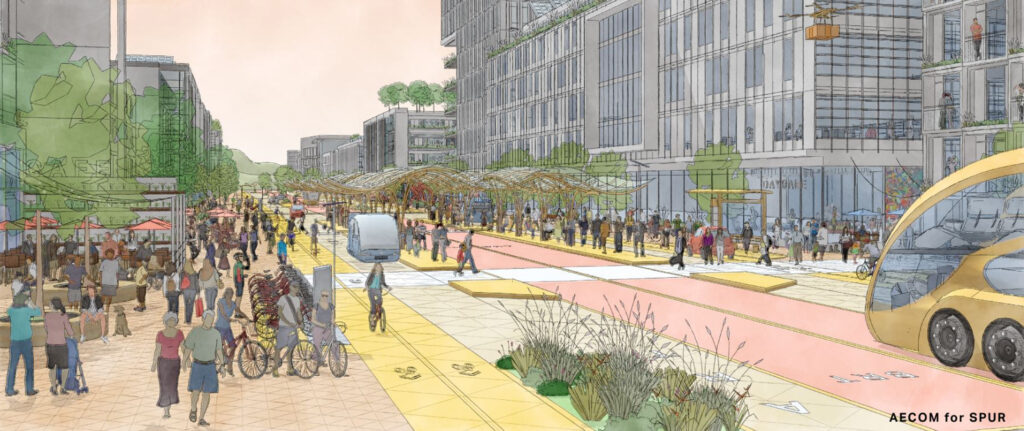Model Places: Envisioning a Future Bay Area with Room and Opportunity for Everyone
The San Francisco Bay Area is one of the world’s most innovative and progressive regions, but it is facing enormous challenges — from the cost of housing to the threat of sea level rise to racial and economic inequity.
Over the next 50 years, the region is expected to gain as many as 4 million people and 2 million jobs. In a place where a crushing housing shortage is already threatening quality of life, how can we welcome new residents and jobs without paving over our green spaces or pushing out long-time community members? To keep pace, and make the region more affordable, the Bay Area will need almost 2.2 million housing units by 2070, according to research from SPUR, San Francisco Bay Area Planning and Urban Research Association.
As part of the Regional Strategy, AECOM collaborated with SPUR to examine what it would take to house everyone who wants to live in the Bay Area. We’ve published our research in a new report, Model Places: Envisioning a Future Bay Area With Room and Opportunity for Everyone.
To determine where growth should go, we used land use data to assign every part of the nine-county Bay Area to one of “14 place types” based on urban patterns that occur throughout the region — from open spaces and residential suburbs to industrial areas and dense downtowns.
 Cul de Sac Suburbs of Tomorrow – Neighbors – both longstanding and new arrivals continue to live close to nature, streets are transformed to make play-space for kids and a place to gather, exercise, and stroll. Last mile mobility solutions move through at a walking pace, between native plantings and permeable swales.
Cul de Sac Suburbs of Tomorrow – Neighbors – both longstanding and new arrivals continue to live close to nature, streets are transformed to make play-space for kids and a place to gather, exercise, and stroll. Last mile mobility solutions move through at a walking pace, between native plantings and permeable swales.
Model Places envisions what six of these different place types could look like if they grew in ways that made them not just more equitable and more sustainable, but more livable and humanizing places to live and work.
Our analysis shows that the Bay Area has plenty of room to grow, but only if every urbanized part of the region is willing to accept its share of the change. The responsibility can’t rest solely with the low- and moderate-income neighborhoods that have seen the most growth in recent years. Affluent places also need to do their part to accommodate new housing and new jobs.
The good news for everyone is that new growth can make existing neighborhoods better places for people, supporting diversity and inclusion, public health, sustainability and community life while retaining many of their essential qualities and lowering our carbon-footprint. And if we do it right, we can grow without sprawl — protecting and restoring the Bay Area’s unique natural environment.
 Office Parks of Tomorrow – 20th Century single-use parking dominated offices parks are transformed into complete communities, with places for people to live and work in an highly amenitized environment. Automated shuttles offer internal circulation and regional transit connections.
Office Parks of Tomorrow – 20th Century single-use parking dominated offices parks are transformed into complete communities, with places for people to live and work in an highly amenitized environment. Automated shuttles offer internal circulation and regional transit connections.
This vision represents a bold new direction for the Bay Area, so we invited five artists to help us bring it to life, lending their different sensibilities to imagine a region where every place does its part and everyone can thrive. You can see their work in the report.
A Call to Action
To realize this vision, the Bay Area must commit to collectively tackling the challenges of housing, transportation, equity and climate change. Getting there will require profound changes in policies, practices, laws and culture — recommendations SPUR will make in upcoming Regional Strategy reports. Real transformation will require a series of changes at different levels of government over many decades. It’s never easy for communities to commit to massive change, especially when they can’t see ahead to the outcome. We hope Model Places gives a glimpse of what’s possible — and inspires a commitment to what’s needed.






